Dress to Impress, a temporary exhibition currently at Perth Museum and Art Gallery features two objects from National Museums Scotland’s World Cultures collection. I was lucky to be responsible for the conservation of one of the objects, a beautiful and delicate Kingfisher hair piece.
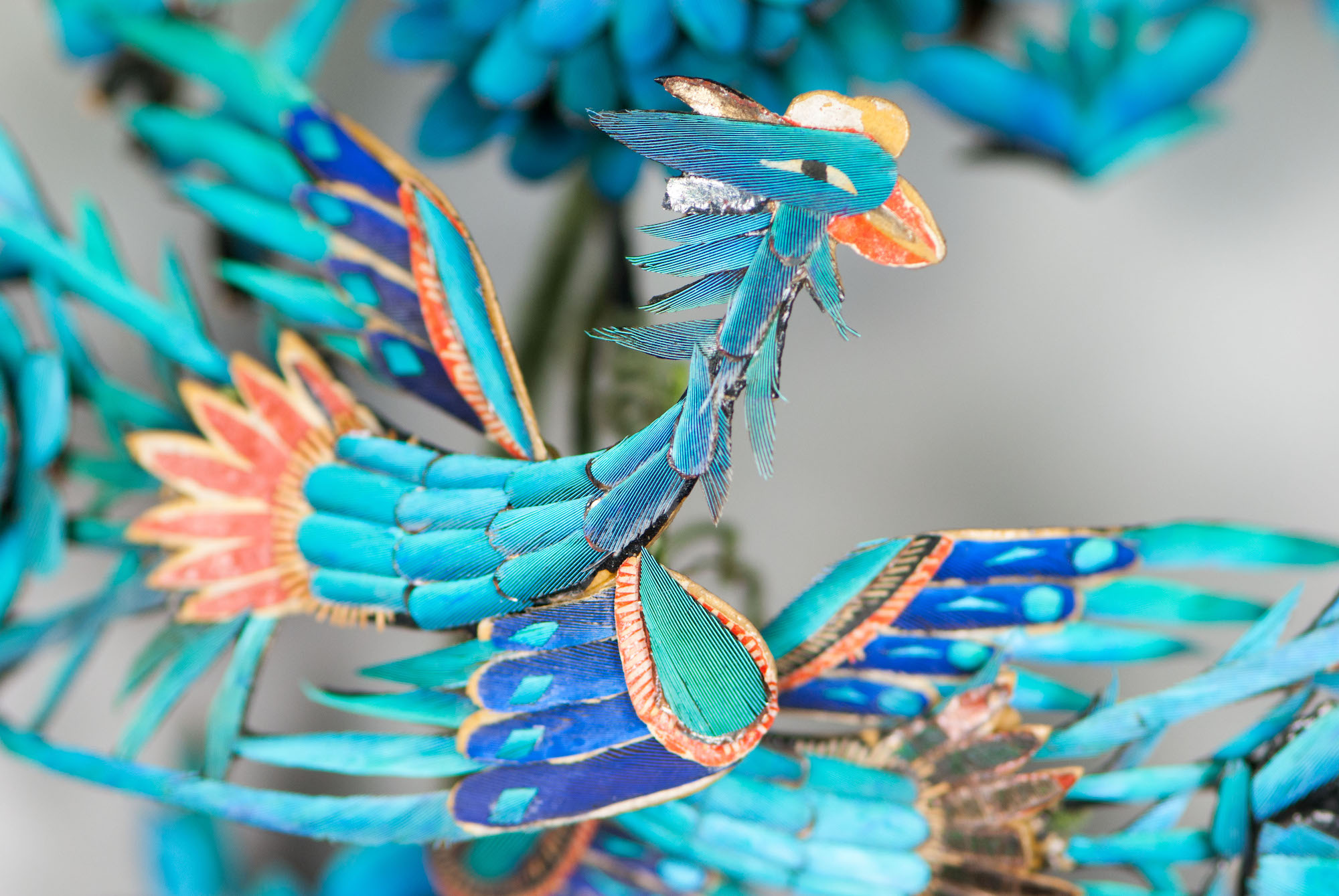
The Kingfisher hair piece required conservation treatment before it was able to go on loan. I was able to follow this wonderful object throughout the loan process, starting with condition assessment and reporting, followed by conservation treatment, mount making, packing for transport, couriering and finally installation.
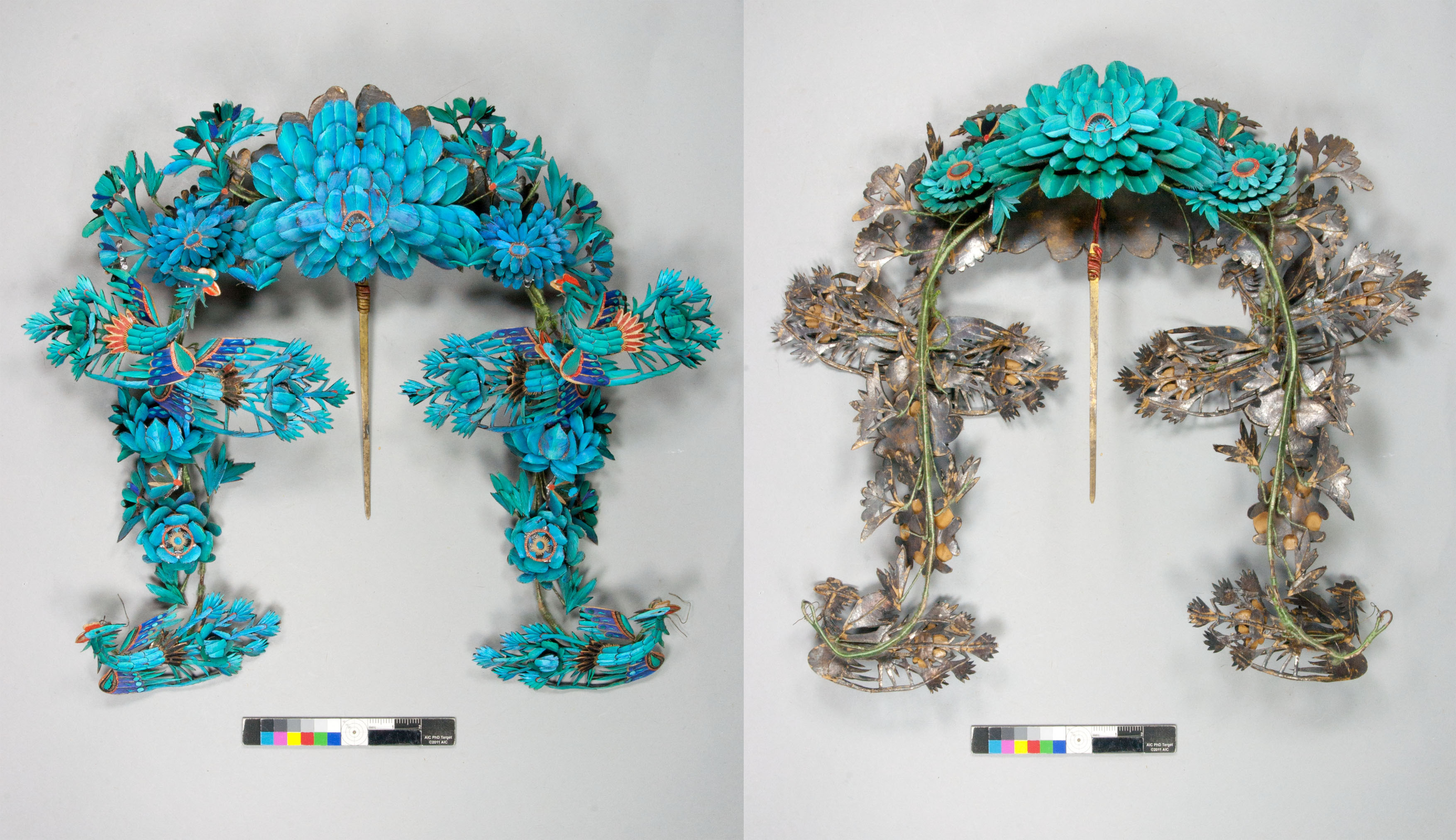
The hair piece was constructed from over 50 individual decorated paper ornaments, supported and connected by fine wire, designed to move and flutter about when worn. A large central pin allowed the piece to attach to the wearer’s hairstyle. The decoration was incredibly detailed, with the vibrant blue kingfisher feathers and red and gold paper layers carefully glued to the small paper decorations. The reverse of the paper decorations was gilded with silver foil and the wires connecting the paper decorations were wrapped with very fine green and red silk.

On assessment it was clear that the object was very delicate! A group of tail feathers from one of the lower phoenixes had detached and unstable areas of kingfisher feathers and paper decoration were visible across the object. Silk fibres wrapping the wire structure had unravelled and been lost in areas. Silver foil on the reverse of the paper ornaments had tarnished over time. Apart from recent damage, the object’s excellent condition was thanks to a major treatment carried out by another conservator a number of years ago, before the object went on display at the National Museum of Scotland.

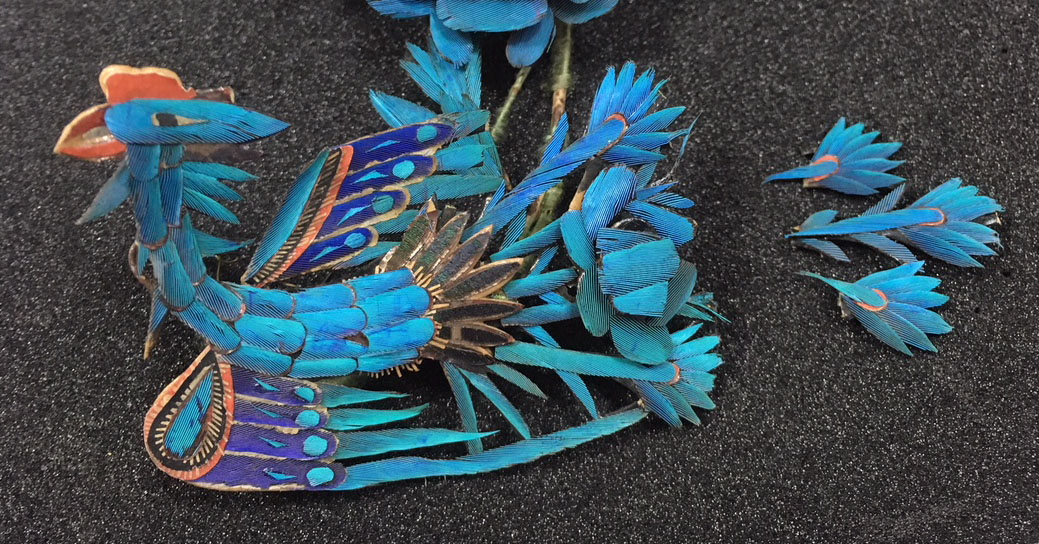
After assessment, photography and thorough documentation, I started by stabilising lifting areas of the feather and paper decoration using 2-5% solutions of Methylcellulose A4M in deionised water and industrial denatured alcohol(IDA) 1:1. Methylcellulose is easily reversible in water once dry and as a weak, cellulose based adhesive it will gently support the feathers and paper without becoming brittle over time.
The unravelling silk fibres were also consolidated with dots of methylcellulose to prevent further loss. In areas where the feathers extended past the paper backing, the feather barbs had separated, these were reintegrated with a fine brush wet with a solution of deionised water and IDA 1:1. Small detached feather fragments and damaged barbs were reattached and supported with methylcellulose.

The detached tail feathers required additional support, and were bonded in place with a 1:1 mixture of Lascaux 498HV and Lascaux 360HV. Lascaux is an acrylic emulsion adhesive and when combined the two types of Lascaux provide the desired level of tax, softness and flexibility.
The joins were supported with 5 small strips of Japanese tissue adhered with the Lascaux mix across the joins on the back of the phoenix. Once dry Lascaux is insoluble in water but retains good strength and excellent flexibility.
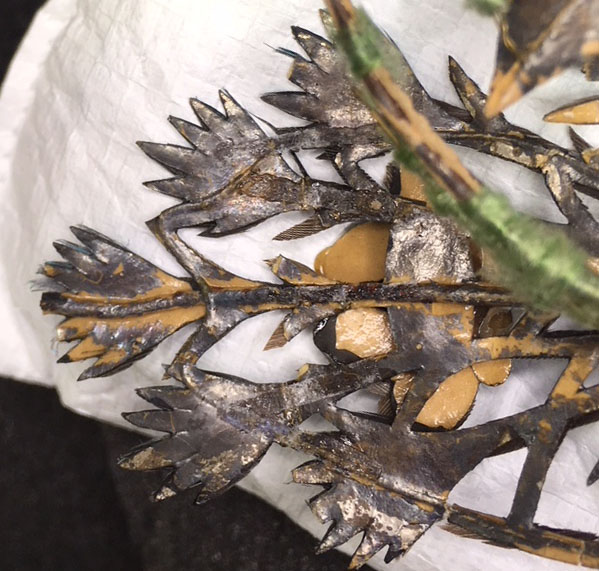
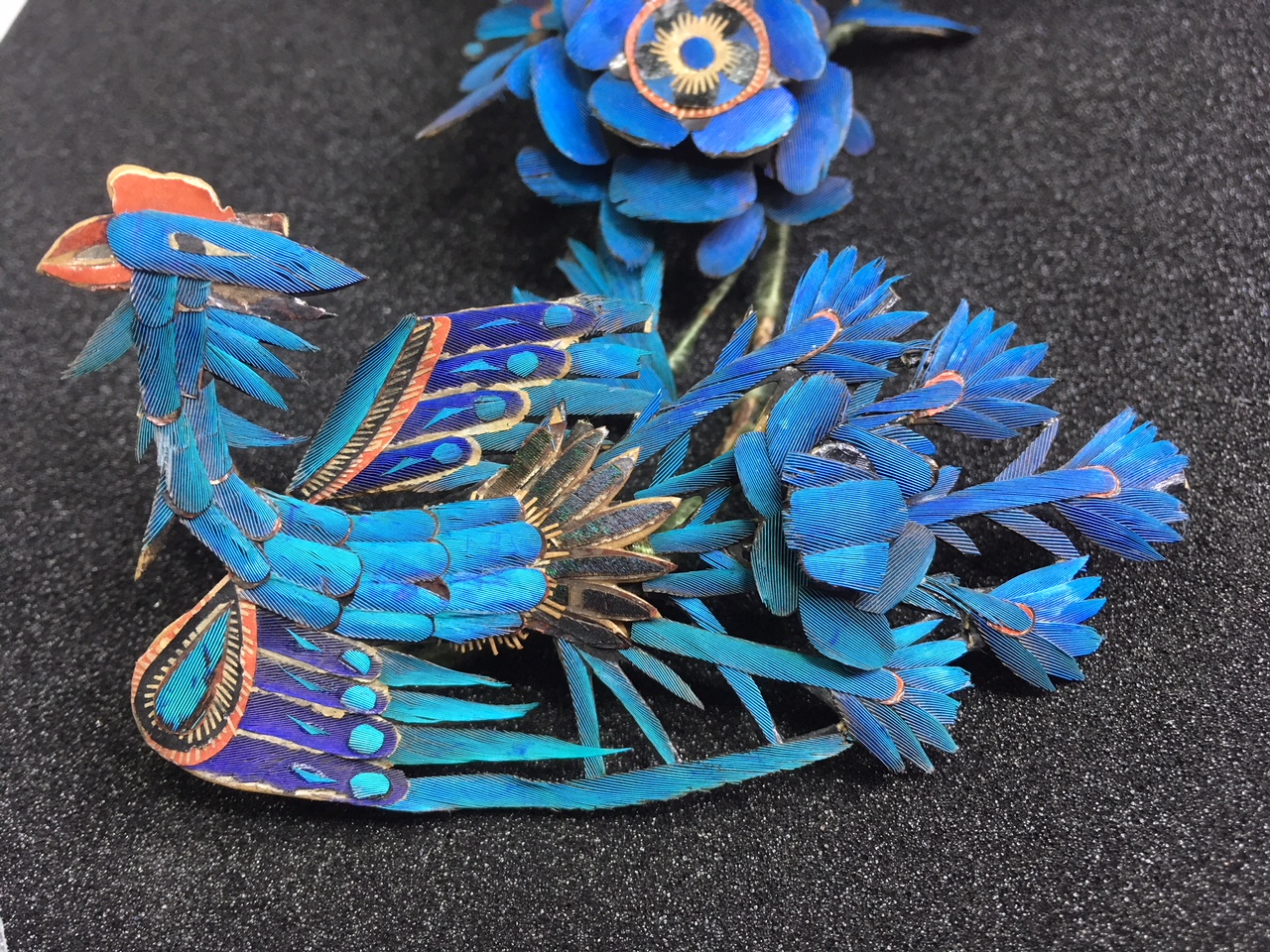
After conservation treatment was complete, a custom mount was designed by the mount maker to support the object on display. I packed the object on its mount in a case, supported by Plastazote foam packing and protected with Tyvek, to ensure it reached Perth safely.

The second object, travelling to Perth from National Museums Scotland, was a Korean hat, which was also carefully packed before departure. I travelled with the objects as courier to Perth Museum and Art Gallery. I installed the objects in their showcases, alongside the lovely Perth team and after checking the environmental conditions in the showcase, both objects are light sensitive and require low light levels, the cases were locked and ready for viewing.
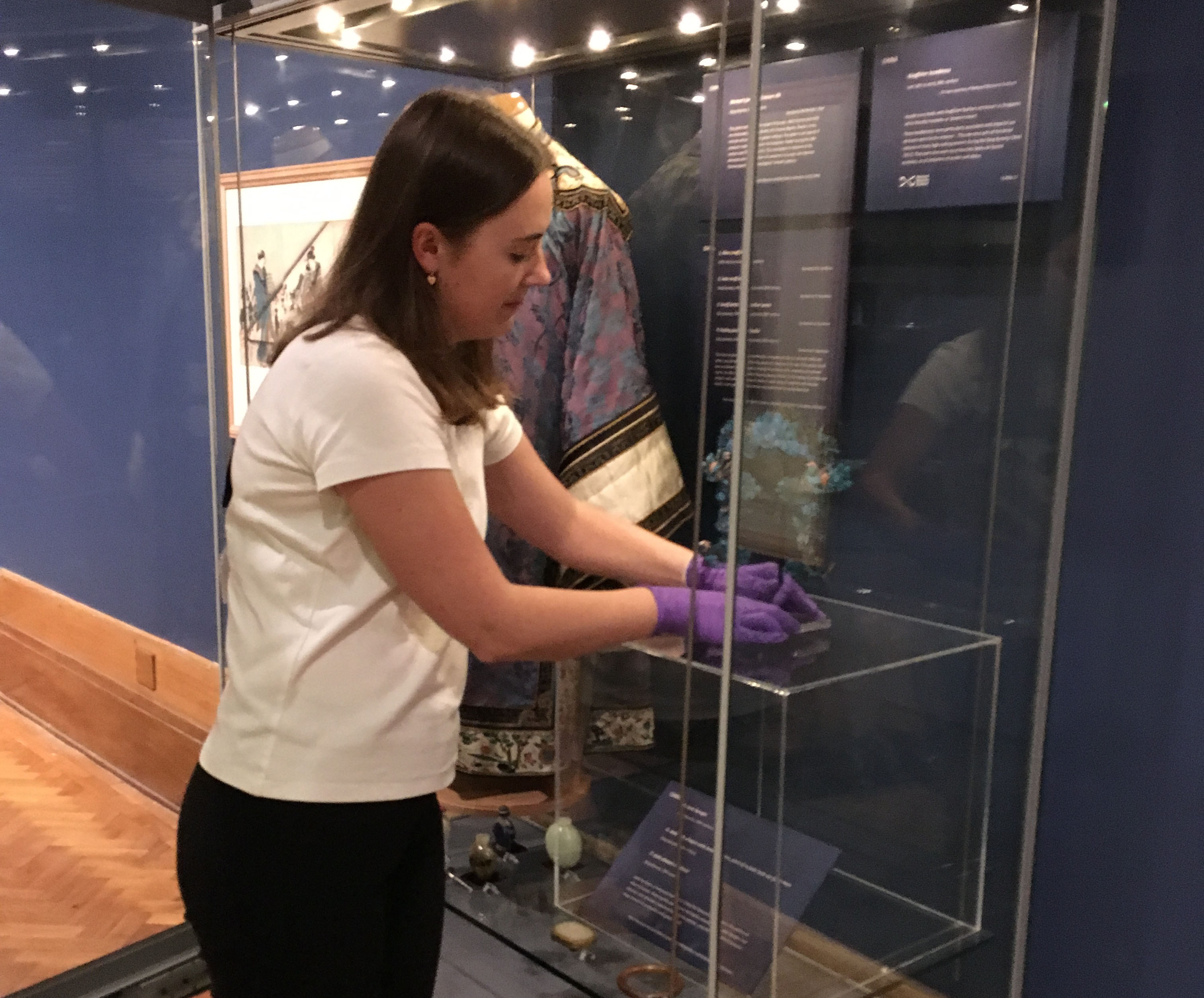
To see this beautiful object on display be sure to visit Perth Museum and Art Gallery, and their exhibition Dress to Impress, revealing rarely seen examples of traditional dress and accessories from China, Japan and Korea.
The display is open until the 27 October. The exhibition is a part of the Ancient Egypt and East Asia National Programme, run in partnership between National Museums Scotland and museum partners from across Scotland.
The display was made possible due to the generous support of the National Lottery through the Heritage Lottery Fund .
